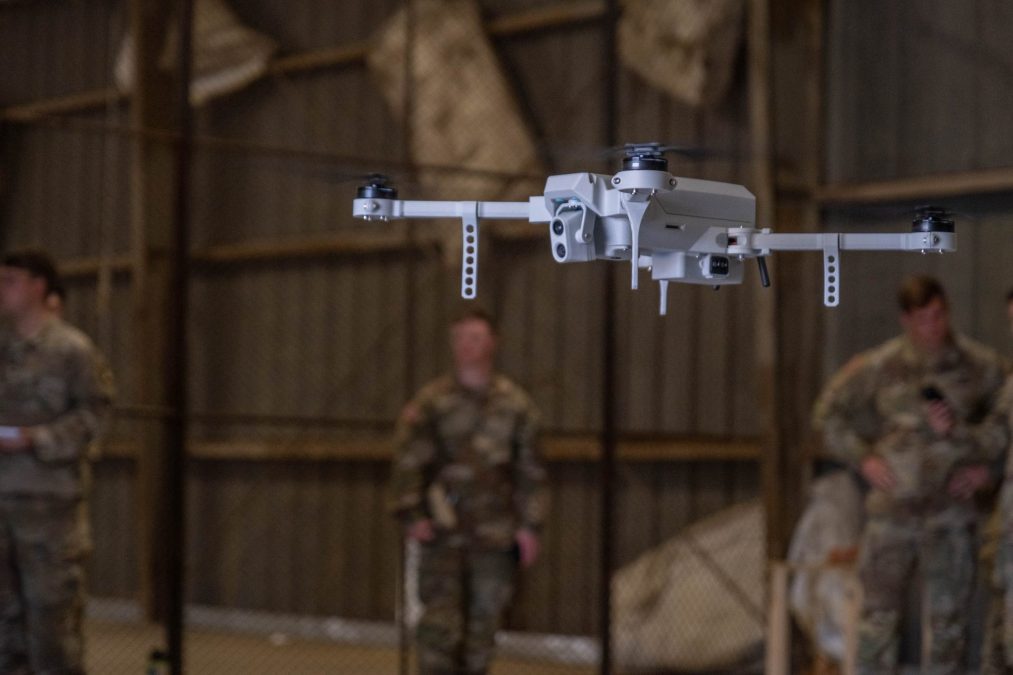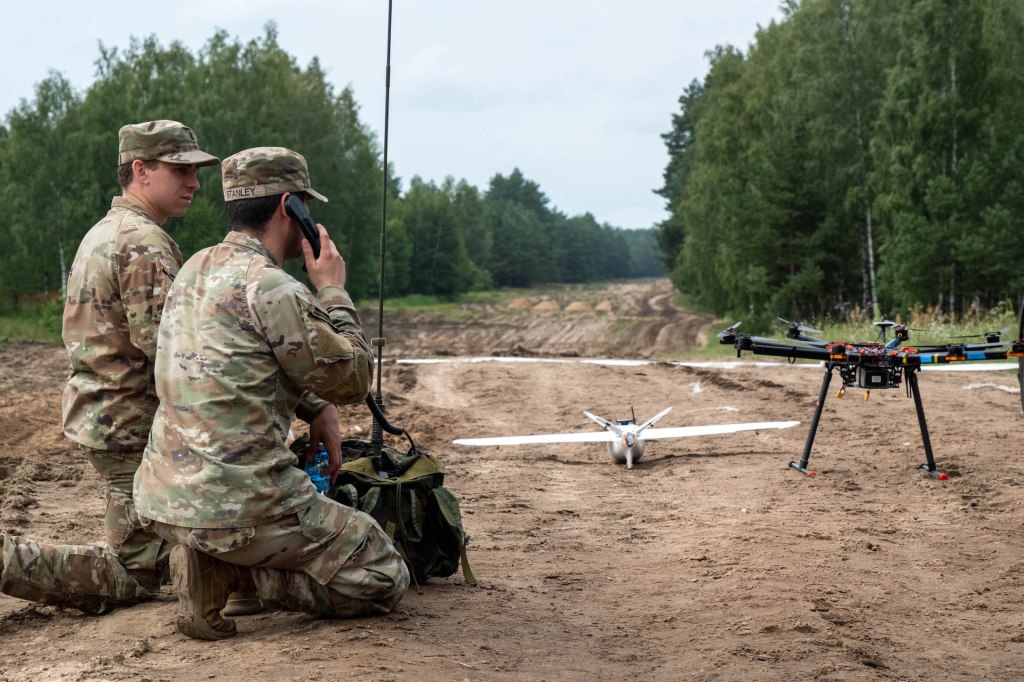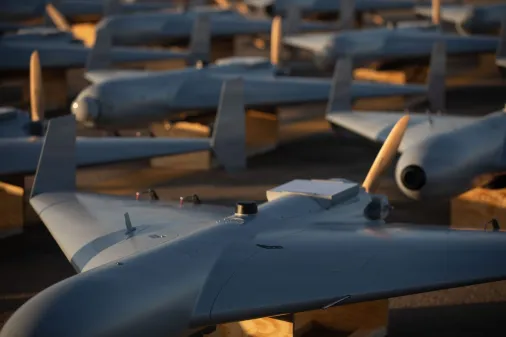Here’s how the Army’s S&T community is looking to meet Hegseth’s ‘drone dominance’ charge

How do you build over 100 unmanned aerial systems on short notice? That was the initial problem that spurred an idea for how to potentially address a key directive from the secretary of defense.
As part of the Army’s Project Flytrap exercise, a joint U.S. and U.K. effort to test new counter-UAS technologies in order to eventually incorporate them into formations, the service’s science and technology office was charged with providing around 100 target drones for troops to defeat.
The only problem was they didn’t have that many just lying around.
“We fly almost every day, and we do have some drones, but we don’t have 100 laying around to support an event on short notice. They’re allocated to other units’ events, so we don’t just have that many sitting on the shelf,” said Adrienne Hughes, chief of the exploitation, analysis and response division at the Army Combat Capabilities Development Command’s Command, Control, Communications, Computers, Cyber, Intelligence, Surveillance and Reconnaissance (C5ISR) Center.
But the team sough to look internally to its subject matter experts and use designs from an innovation challenge a few weeks prior to make the drone airframes and flight controllers from scratch using 3D printers to meet the need for the exercise.
“No sooner did we get those built, but we learned what the incredible demand is out there to have enough drones to simulate the modern battlefield and train as we fight,” Hughes said. “Within days of having produced the set of target drones, we had customers beating down our doors for more, and it really spawned a new rapid approach for target drones. That was our drone dominance ‘aha’ moment and it brought us to envisioning a new future.”
Secretary of Defense Pete Hegseth issued a directive last month on “Unleashing U.S. Military Drone Dominance” which sought to improve how the Pentagon develops and employs UAS.
While the Army has sought to increase its employment and development of drones, spurred by observations from the war in Ukraine, the C5ISR Center saw its recent Flytrap experience as an opportunity to meet the secretary’s directive to achieve “drone dominance” and look to overcome production challenges.
The idea, still very much in its infancy and only really at the drawing board right now, is to develop a marketplace where industry can rapidly produce low-cost, attritible UAS.
“We know that that industry is going to need to build the drones. We can’t scale and we shouldn’t scale to building drones at the rates that they’re needed, but the center has a pedigree of enabling industry to innovate and we need to use industry as a force multiplier,” Hughes said. “We know that while industry is going to do this work, we have significant subject matter expertise in designing, building and flying drones. And we have a deep understanding of the operational context that they’re being used and how they’ll be used in the future. We understand the electronics and controls … as well as the cyber risks. We understand how different drone variant platforms perform, how the design and flight characteristics work. And we know how to build drones.”

The goal is to begin to support a larger portion of the industrial base, a key tenet in Hegseth’s memo, to be able to produce more UAS.
“We see a recognized need for a drone marketplace, curated online maker space that provides validated designs and directly connects units with vetted industry partners, alongside critical engineering, technical and operational support,” Samantha Strimpler, replication, evaluation and mitigation branch chief at the C5ISR Center, said. “A UAS marketplace like that could enable rapid response to mission requirements by 3D printing drones in forward locations without every soldier needing to understand what material they need to use to print their drone or even which electronic components are safe to use. I think the key here is really a collaborative approach to drone dominance. Industry can provide exquisite capabilities with protected IP, but there’s also a place for validated designs that are available as is, or for modification.”
By using vetted companies and vetted designs, the C5ISR Center can provide its expertise from years of experience.
This wouldn’t just be for the dedicated drone makers either. Since there are relatively rudimentary and open designs for UAS like simple quadcopters, as long as an industry partner has some level of manufacturing capacity, they can be included in this marketplace.
A potential marketplace, under the vision, would involve industry providing “full-up solutions,” Hughes said, that are a complete system that people can buy and use.
Based on open source information and open standards, approved users can get platforms built or tweaked by industry.
“I do see something like a marketplace like this being open to many different modalities of manufacturing, everything from the potential of using 3D printing for motor mounts and using wood spars to make a really rudimentary drone to making something exquisite,” Strimpler said. “There’s industry partners out there that have really exquisite, really effective designs that use, obviously, much more advanced techniques for manufacturing.”
The goal is also to make the systems tailorable based on units’ needs.
“If a unit needs to customize it for a particular mission set, with the expertise that that is brought to bear, both operationally, engineering and technically, those customizations can be provided in that kind of a marketplace as well,” Hughes said.
The key is the advisory capacity from experts at the center.
“It’s a real opportunity for us to bring the expertise that we’ve gathered over the course of quite a lot of years now, both in the understanding of drones and UAS as well as the understanding of how to employ them and even the understanding of UAS type missions,” Strimpler said. “I think it’s good for us to be able to provide that advisory capacity, frankly, to what now becomes a maker community, a DOD maker community that encompasses everybody from the end user all the way through industry.”
Hughes also noted that for vendors, the incentive to participate in such a marketplace is access to units and the potential scale of such an initiative.






